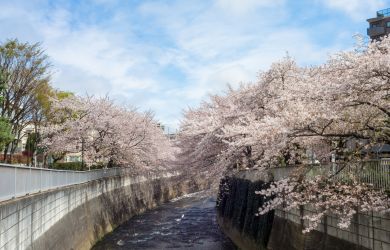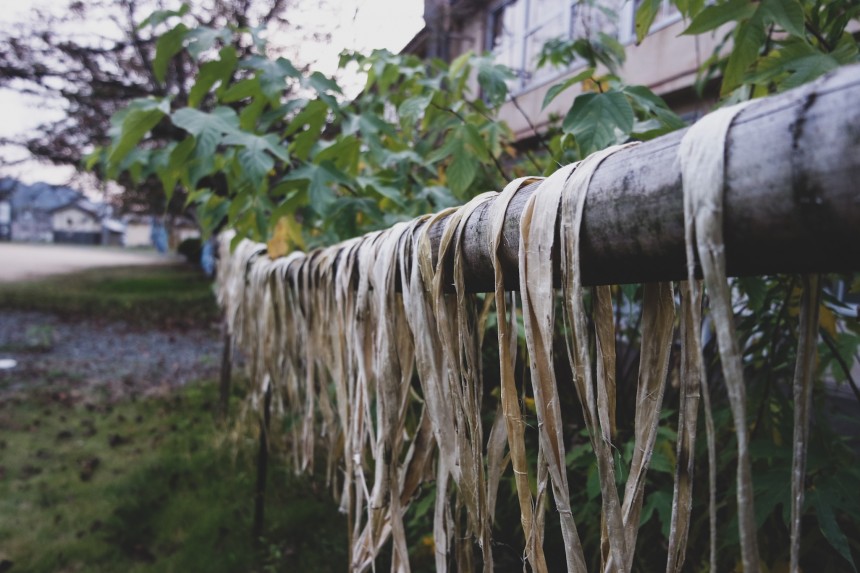
June 3, 2019
Kurotani Washi-no-Sato
A visit to a historic japanese papermaking village
Not far from Kyoto, there’s a village that has been dedicated to the traditional craft of washi papermaking for more than 800 years. Kurotani village is lulled in quiet nature, with streams of clear water running down along the streets, between old Japanese houses. It is in one of these streams that we find Horie Sato, knee deep in water, treading mulberry branches. She is 86 years old and has been making washi paper for almost 70 years.
Washi Paper from Scratch
Most villagers in Kurotani are like Sato, making paper from scratch. Legend has it that this unassuming mountain village was a refuge of the defeated Heike clan, where they survived by growing rice and making washi paper. Papermaking is traditionally a winter craft, when villagers can take a break from agriculture. Washi paper is made partly from the bark of the kozo tree (Japanese mulberry tree) and partly from mitsumata (oriental paperbush). Sato and other craftsmen tread the soaking branches in the stream, the first step of the papermaking process, enabling them to strip the wet bark from the branches. This is followed by a drying process, then cleaning and finally, the beating and breaking of the material into a mash solution.
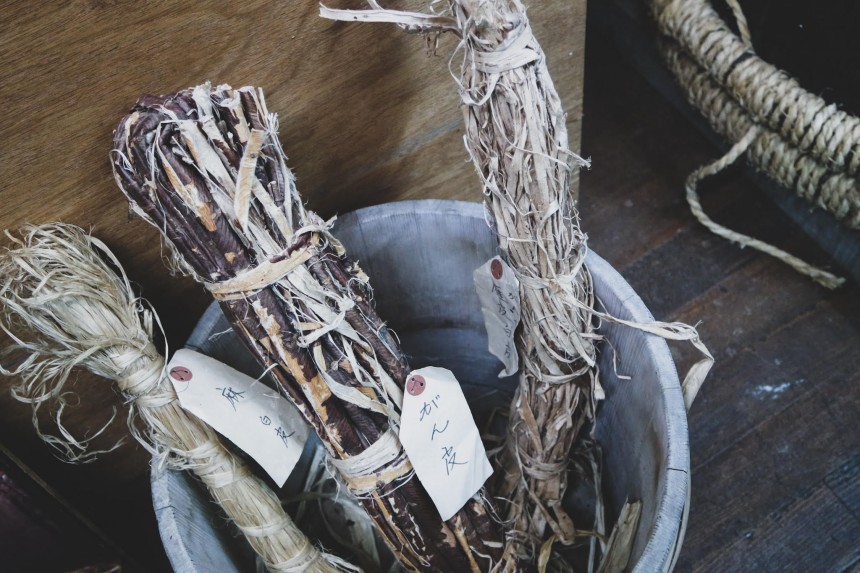
Kurotani washi has earned a special place among Japanese washi paper, and not only because it has more than 800 years of history. It’s also known to be quite strong and long-lasting, seemingly unimportant traits for paper, but washi is traditionally also used for shoji paper sliding doors and umbrellas, among many other things — writing, envelopes, decorative cards, origami, packaging, lanterns and other household items. Nowadays, washi is sold more as a rare luxury item, especially if it’s handmade as is the case with Kurotani washi paper.
Washi Making Workshops in Kurotani
Not far from the village itself, the local school has been reborn and revamped to house papermaking workshops, a gift shop and a small museum. The facility is named Kurotani Washi Kougei No Sato (Kurotani Washi Craft Village) and its workshops give visitors a hands-on experience of making paper starting with the mash fibre solution of mulberry and paperbush stripped bark. This part of the process is called ‘sheeting’ and it uses special rectangular sieves to separate water and fibre. The instructors teach you special moves; a lot of shaking and gyrating is involved, as you try and layer the pulp so that the fibres intertwine and become paper. It might look daunting at first, but you’ll find that everyone will be able to do this, resulting in a lot of fun and impromptu dancing.
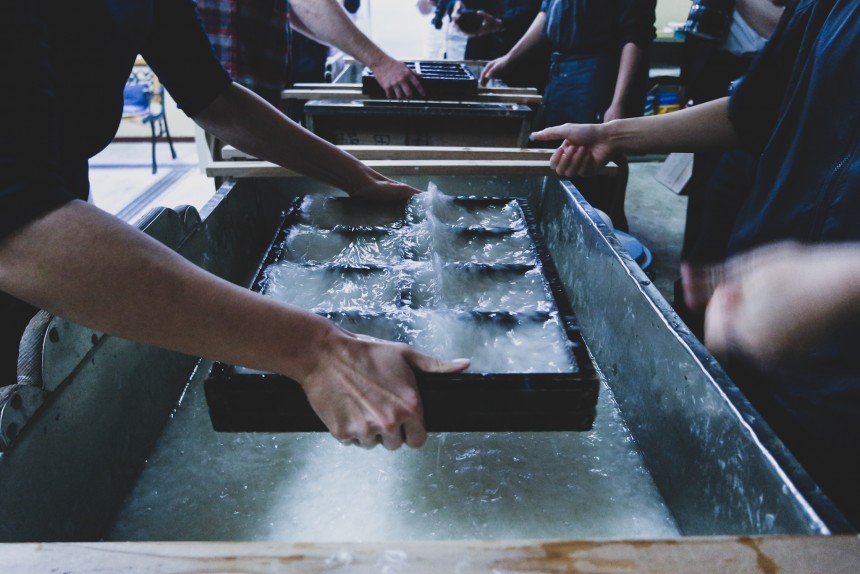
The process can end there and the rectangles of wet pulp can be left to dry out and become washi paper. However, for a more creative version of washi paper, the sheeting process can be followed by decoration. This can involve dying, adding plants and flowers, gold flakes etc. Bear in mind that the more decorations you add, the riskier it is that the paper fibres will not bond and it will break apart. However, the Kurotani workshop organisers provide a sieve with several rectangles so you can leave aside some of the plain washi paper cards to play it safe, and try decorating the rest of them.
The Kurotani washi workshop is a truly off-the-beaten-track experience, and unsurprisingly it has to be booked in advance. It’s open only on weekends and national holidays, from 9am to 4:30pm, and it’s closed from January to March. The experience is very hands-on, but a little bit of Japanese will go a long way in communicating with the staff. The workshop itself costs only ¥1,000, but being able to make paper by yourself in one of the most historic papermaking villages in Japan feels priceless. And you can always pick up more handmade paper from the gift shop inside Kurotani Washi Kougei no Sato or Kurotani Washi Kaikan, the gift shop back in the village. They are open interchangeably, so the village gift shop is open on all days, except on weekends and national holidays, and can also occasionally be the venue for the papermaking workshop.

Getting to Kurotani Village
Despite looking like a lost village in the mountains, Kurotani Washi-no-Sato is only 15 minutes by car from Kyoto on the expressway. It is also easily accessible by public transport via the JR Sanin Main Line to Ayabe Station. At the station’s south exit there’s the Aya Bus Kurotani Line, with a bus that takes you right to Kurotani Washi Kaikan Mae, just two minutes from the village. To go to the washi papermaking workshop at Kurotani Washi Kougei no Sato take the Aya Bus Kanbayashi Line and get off at Tokura. From there it’s just a two minute walk.
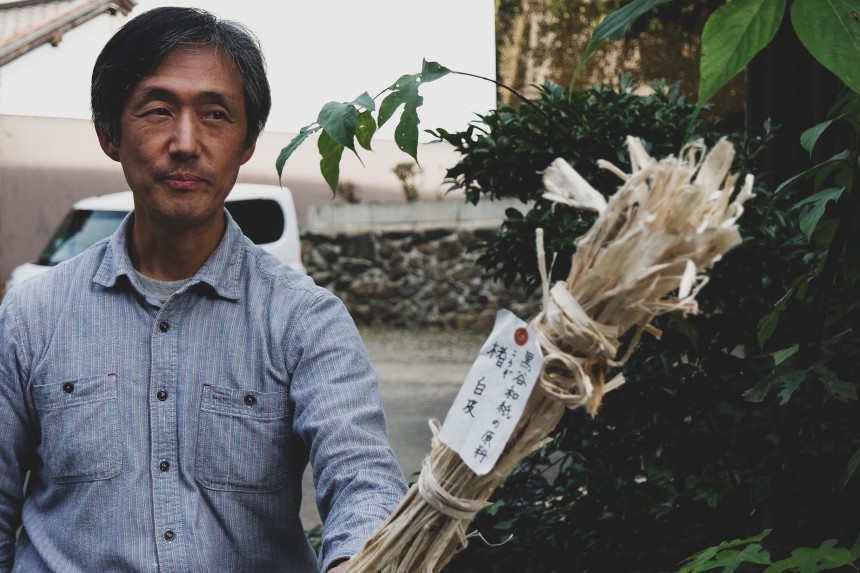
Being close to Kyoto and the silk-making area Tango certainly helped Kurotani washi on the road to fame, as their paper was used for packaging of silk and kimonos. But after the Meiji Restoration introduced imported technologies, the demand for washi decreased and the population of the village dwindled. Today, there are about 10 families left continuing the craft. What kept Kurotani washi relevant is that to this day it is still handmade from natural ingredients. Nowadays, Kurotani washi has forged a name for itself as a high-end product and a valuable Japanese art, being kept alive and passed onto future generations.
Information:
Kurotani Washi Kougei No Sato (open only on weekends and national holidays)
Address: 31 Kaketo, Tokura Nabatake-cho, Ayabe City, Kyoto 629-1242
Phone: 0773-45-1056
Kurotani Washi Kaikan (only open on weekdays, closed on weekends and national holidays)
Address: 3 Higashidani, Kurotani-cho, Ayabe City, Kyoto 623-0108
Phone: 0773-44-0213

